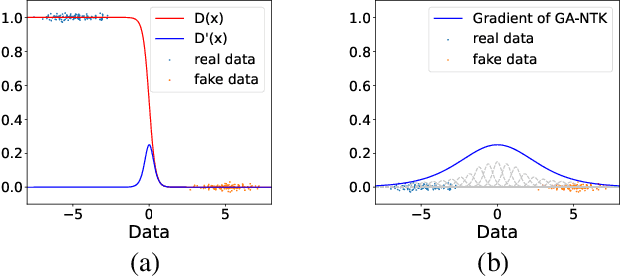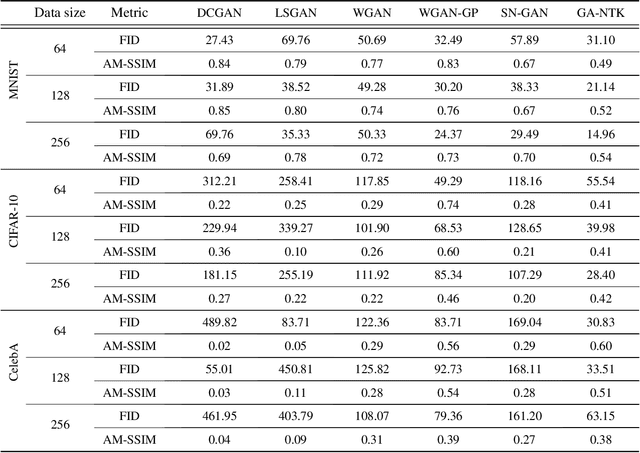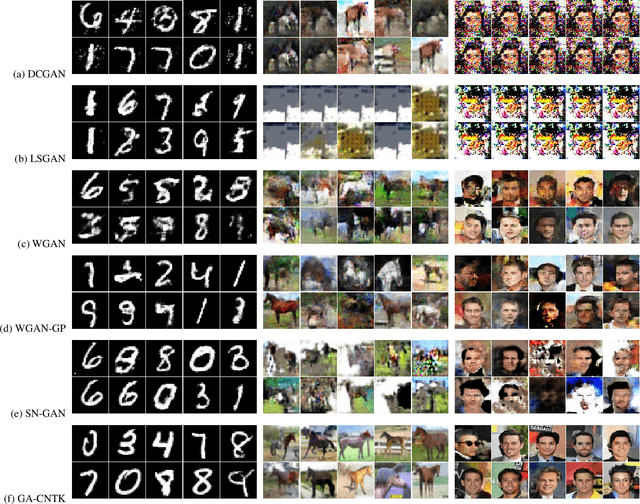Shan-Hung Wu
Generative Adversarial Method Based on Neural Tangent Kernels
Apr 11, 2022



Abstract:The recent development of Generative adversarial networks (GANs) has driven many computer vision applications. Despite the great synthesis quality, training GANs often confronts several issues, including non-convergence, mode collapse, and gradient vanishing. There exist several workarounds, for example, regularizing Lipschitz continuity and adopting Wasserstein distance. Although these methods can partially solve the problems, we argue that the problems are result from modeling the discriminator with deep neural networks. In this paper, we base on newly derived deep neural network theories called Neural Tangent Kernel (NTK) and propose a new generative algorithm called generative adversarial NTK (GA-NTK). The GA-NTK models the discriminator as a Gaussian Process (GP). With the help of the NTK theories, the training dynamics of GA-NTK can be described with a closed-form formula. To synthesize data with the closed-form formula, the objectives can be simplified into a single-level adversarial optimization problem. We conduct extensive experiments on real-world datasets, and the results show that GA-NTK can generate images comparable to those by GANs but is much easier to train under various conditions. We also study the current limitations of GA-NTK and propose some workarounds to make GA-NTK more practical.
Ego-CNN: Distributed, Egocentric Representations of Graphs for Detecting Critical Structures
Jun 23, 2019



Abstract:We study the problem of detecting critical structures using a graph embedding model. Existing graph embedding models lack the ability to precisely detect critical structures that are specific to a task at the global scale. In this paper, we propose a novel graph embedding model, called the Ego-CNNs, that employs the ego-convolutions convolutions at each layer and stacks up layers using an ego-centric way to detects precise critical structures efficiently. An Ego-CNN can be jointly trained with a task model and help explain/discover knowledge for the task. We conduct extensive experiments and the results show that Ego-CNNs (1) can lead to comparable task performance as the state-of-the-art graph embedding models, (2) works nicely with CNN visualization techniques to illustrate the detected structures, and (3) is efficient and can incorporate with scale-free priors, which commonly occurs in social network datasets, to further improve the training efficiency.
 Add to Chrome
Add to Chrome Add to Firefox
Add to Firefox Add to Edge
Add to Edge